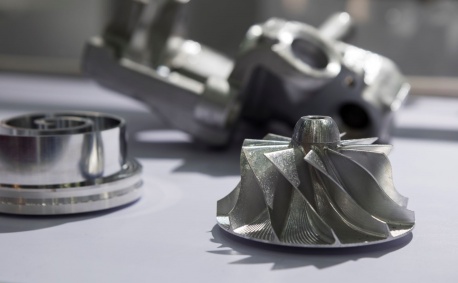To Affinity and Beyond
 Crest Pumps explains the three pump affinity laws, outlining how they affect the performance of a pump, and demonstrating how they can be used in estimating the impact of making changes to a pump’s shaft speed or impeller diameter.
Crest Pumps explains the three pump affinity laws, outlining how they affect the performance of a pump, and demonstrating how they can be used in estimating the impact of making changes to a pump’s shaft speed or impeller diameter.
The pump affinity laws are a set of formulas that help predict flow, head and power absorbed at different shaft speeds. If you know the shape of a pump performance curve at a certain speed or with a certain impeller diameter, you can use the affinity laws to predict the performance of the same pump at a different speed or with a different diameter impeller with a high degree of accuracy.
There are three affinity laws:
LAW 1 – FLOW IS PROPORTIONAL TO SHAFT SPEED OR IMPELLER DIAMETER
As shaft speed or impeller diameter changes, flow is changed by the same proportional amount. In other words, if shaft speed increases by 10%, then flow at the same head will also increase by 10%. This law is expressed with the following formula:
Q1Q2= (N1/N2) or (D1/D2)
Where Q is equal to flow, N is equal to shaft speed, and D is equal to impeller diameter.
LAW 2 – PRESSURE IS PROPORTIONAL TO THE SQUARE OF SHAFT SPEED OR IMPELLER DIAMETER
As the shaft speed or impeller diameter changes, pressure changes in proportion to the square of the change in shaft speed or impeller diameter. In other words, if shaft speed increases by 10%, then pressure at the same flow will increase by 21% (1.10²). This law is expressed with the following formula:
H1/H2 = (N1/N2)² or (D1/D2)²
Where H is equal to head, N is equal to shaft speed, and D is equal to impeller diameter.
LAW 3 – POWER IS PROPORTIONAL TO THE CUBE OF SHAFT SPEED OR IMPELLER DIAMETER
As the shaft speed or impeller diameter changes, power changes in proportion to the cube of the change in shaft speed or impeller diameter. In other words, if shaft speed increases by 10%, then pressure at the same flow will increase by 33.1% (1.10³). This law is expressed with the following formula:
P1/P2 = (N1/N2)³ or (D1/D2)³
Where P is equal to power, N is equal to shaft speed, and D is equal to impeller diameter.
USE OF THE AFFINITY LAWS
The affinity laws will produce highly accurate results in predicting the impact of changes in speed. However, as an impeller’s diameter changes, the impeller’s efficiency will also change; therefore, applying the affinity laws to calculate the impact on pump performance as a result of a change in impeller diameter is helpful but not always highly accurate. 
Back to Latest News


3.png&w=170&h=170)






1.png&w=170&h=170)
2.jpg&w=170&h=170)
